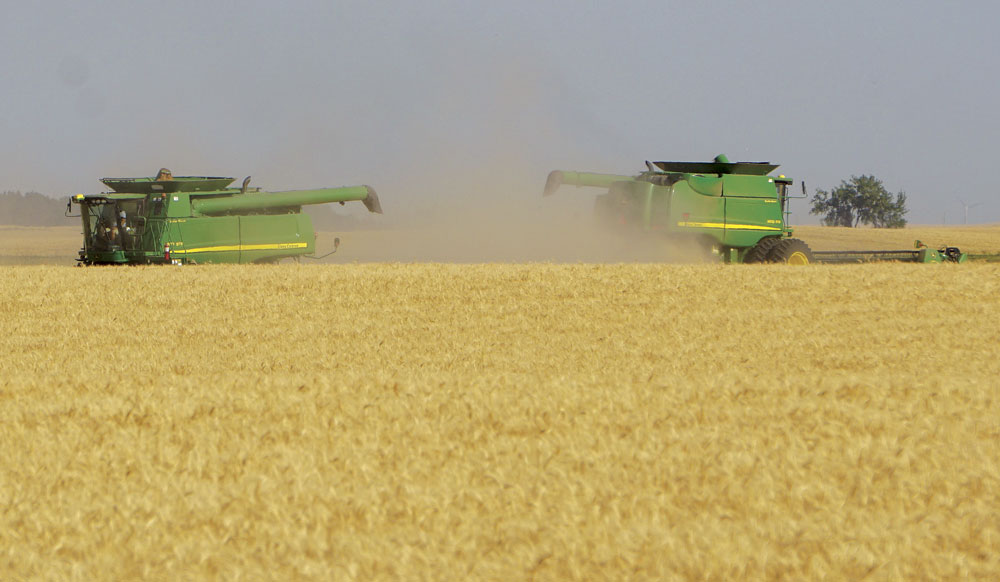Market rally could influence planting decisions

Combines bring in the 2020 grain harvest near Minot. Strong commodity demand has caused prices for wheat, corn and soybeans to go up this winter. Jill Schramm/MDN
A rally in market prices for corn, soybeans and wheat this winter has area producers taking their time making planting decisions this spring.
Tony Smith, grain division manager at CHS SunPrairie, said the company has been getting numerous calls and questions from farmers related to planting.
“I am not sure that a lot of decisions have been made,” he said. “Some in our area are really dry so they need to take that into consideration. They are concerned about what to plant because of that.”
Kayla Burkhart, general manager at Dakota Midland Grain, said the National Agricultural Statistics Service report at the end of March on acreage intentions is expected to show less spring wheat and increases in corn and soybeans.
“The biggest thing that people have been paying attention to is really the corn and bean markets that have been coming up like crazy. When we see this, it presents some of the best selling opportunities for new crop,” she said.
Agriculture is a game of managing risks, though, and prices could fall with good crops at harvest. On the other hand, locking into a contract can create problems if circumstances, such as the drought currently affecting key U.S. growing areas, cause a harvest to fall short.
“I am not super confident that prices will be at today’s level come harvest time,” Burkhart said. “The reason we are rallying like this is because there’s a supply shortage.”
The expectation for the short term is that prices will remain higher because U.S. stockpiles have declined due to increased export demand. That demand, especially for soybeans in China, isn’t going away, Smith said.
Farmers have been moving commodities this winter to capture the higher prices, according to Smith and Burkhart. However, there’s been a limited amount of soybeans that wasn’t already sold off the farm. An early frost last fall also hurt some of the soybean crop in the Minot area, although Smith said it was a good bean harvest overall.
Various factors still could affect prices going forward, but producers are viewing the current levels as a good sign for this year’s market prices, Smith said.
“The feeling now in the market is that they will be a little bit better, just for the fact that we are at a high starting point,” Smith said.
Burkhart said wheat prices might have a tougher time remaining at the higher level because there is a good supply in storage.
“That’s going to be the market that gets really interesting. We aren’t likely going to see an acreage increase on wheat, but by the same token, there’s a lot of wheat in the countryside,” she said.
Spring and winter wheat prices tend to move together, and markets are waiting to see what effect recent cold temperatures might have had on winter wheat areas, she said.
Drought conditions that last into spring could concern the markets as well as farmers. Midwestern states have been in a somewhat better position, with dry conditions less widespread, while dry conditions predominate across much of the Great Plains and to the west. However, with weeks to go before planting begins in North Dakota, farmers are hopeful.
“It’s the spring moisture that really matters,” Smith said.
